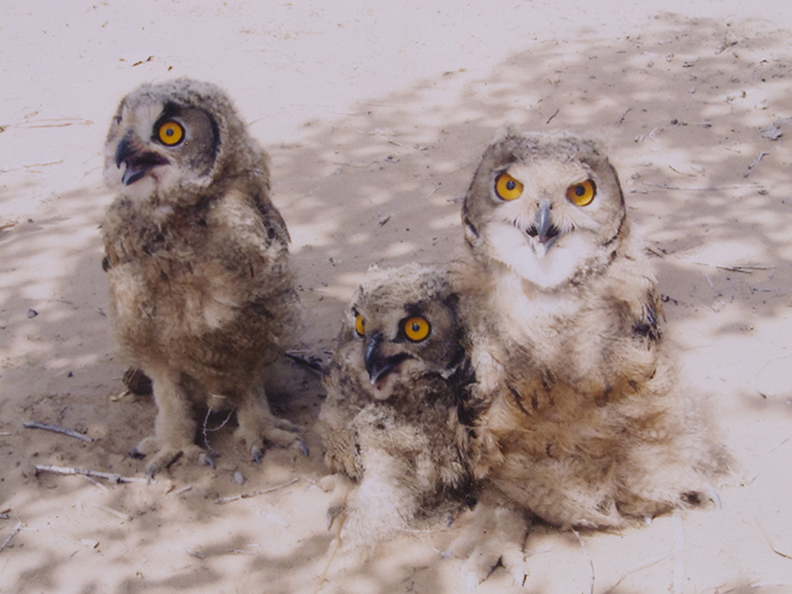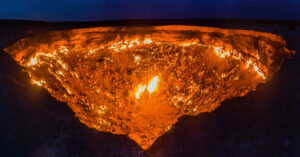A few months before the pandemic shut down first China, then the world, I spent a month in the Mu Us Desert of Inner Mongolia. I was there to do a kids’ book about a remarkable woman, Yin Yuzhen, whom I had met at a conference in Beijing.

When Yin was 19, she was dealt a cruel hand that is hard for us to understand in the West. Yin’s father, who traveled for work, had a poor friend who lived in the small Mu Us Desert of Inner Mongolia. The friend was dying and wanted to see his son married, so Yin’s father offered his daughter to the young man. Yin dutifully did what her father asked.

As a kid, Yin had been energetic, hyper-social, a leader among the other kids. Suddenly she found herself living in a cave dug into a sidehill, surrounded by barren desert. The shelter was so small that their feet stuck out the door when they slept. Blinding sandstorms lasting days were frequent. “The sand coming out of your eyes, ears, and nose could make a pile on your hand,” she recalled.
Besides her husband Bai, who never said much, she sometimes didn’t see another person for months at a time. When she did, it was often to beg for food.
She decided to try planting trees. Maybe it was just to assert some sort of control over her life, to resist the desert somehow. She knew nothing about planting trees, and since she couldn’t read or write and had no one to advise her, learning was all trial and error.

She started with a few trees outside their cave. Her husband Bai signed on to Yin’s project. He began to work elsewhere to earn a little money. It all went to buy seedlings. They still begged for food.
She cared for the trees as well as she could. She nourished them with water from their well. When sandstorms uprooted them, she tried to replant them. She plucked insects off the branches one by one, using twigs as chopsticks. The desiccating wind was particularly challenging, yet she couldn’t plant trees in sheltered hollows, because sand accumulated there and buried everything. Of her first 1,000 trees, only 10 survived.
Although she had no school learning, Yin had an active mind and a good brain. As she did her household chores, she tried to work out problems in her head. She decided to stabilize the soil with grass, then shrubs, before adding trees. The first time she tried planting grass seeds, desert mice ate them all. She tried to plant them deeper by hoeing a furrow, but the mice got them too.
The couple had two sheep, one of which was lame. She took the non-lame one with her and planted seeds in the hoofprints that it made in the sand. The sheep’s smell masked the seeds. The mice didn’t find them, and the grass grew.

Furrows to plant grass and desert shrubs to stabilize the soil.

Apart from being a problem solver, she was a conceptual thinker. She planted tall, hardy trees such as poplars and Scotch pines on the outer perimeter, to keep the desert at bay. She planted somewhat smaller trees in the middle, along with stabilizing bushes. Her plan was to create a fortress and afterward, to plant fruit trees and crops in the protected centre, where they lived.

Eventually, they built a larger, more comfortable mud hut in front of the old cave in the hillside. By now, Yin and Bai had four kids of their own. She birthed three of them by herself, alone in the hut, on a sheet of plastic. She described to my translator Ting how to tie off the umbilical cord yourself. Ting lived in Beijing now but had grown up in a neighboring province, so with effort, she could understand Yin’s difficult Shaanxi dialect.
After 10 years, Yin’s hard work began to pay dividends. In that part of China, those who plant trees in the desert have a right to use the land. Yin lived on the border of Uxin Banner and Shaanxi province and had planted trees in both districts. Some business people and politicians from Shaanxi discovered the trees and paid some local bureaucrats to take much of the land away from her. She couldn’t fight them directly, but a distant relative suggested that she contact the media.

This turned out to be inspired advice. She may not have known how to read, but she was an articulate and confident talker. Reporters came from all over the country to hear her story. In the end, she won back most of the land that she planted. Then around the year 2000, the government began to officially approve of her and what she did. In China, that is hitting the jackpot.

Yin piles snow around saplings in late winter, so each will have its own brief reservoir of water.

Yin cooks lunch in the early days.
By the time I visited her, almost 20 years later, Yin was in a very different place from where she began. The poor beggar girl in the barren desert now controlled 70,000 hectares of land, about 26 by 27km. The central government recognized her as a model worker and had decorated her many times. Twice, it selected her as one of the 10 most powerful women in China. She was one of the torchbearers in the 2008 Beijing Olympics. There are five People’s Heroes in China, and she is one of them. Her nickname, without irony, is Model Citizen.


Internationally, her desert reclamation work has won environmental awards. And she was one of a group of 1,000 women worldwide nominated for the Nobel Peace Prize in 2005.
Companies and individuals began to support her. An American man once gave her $5,000, more money than she’d ever seen in her life. She carried it home in a bundle in her dress and spent it buying bigger saplings that had a better chance to survive. (Nowadays, she has learned enough that the survival rate of her trees is around 70 percent.) One company gave her a Toyota SUV; another built a $200,000 pagoda near her home. Every year on Earth Day, April 22, which is also her birthday, a number of Chinese CEOs come and ceremonially plant trees for a morning. Then they pay for the trees’ upkeep during the year.

Yin and Bai.
She and Bai no longer live in a mud hut. The government paved eight kilometres of road to her place, then built a small house for her with roof beams from one of her first poplars. There are also several outbuildings, including a museum-cum-banquet hall, a cavernous kitchen with a twig stove, and even a big empty hotel where visitors like myself could stay. She and her husband still do much of the work. And with what she earned from her many crops, including millet, corn, and watermelons, she hires workers to help her plant even more trees.


From her pagoda, Yin (top) surveys a landscape transformed. Photos: Jerry Kobalenko
Finally, she is even a congresswoman in her district of Uxin Banner. On my second day there, a prominent local politician came by. He asked if there was anything he could do for me.
I still had to put in a few hours every day editing ExplorersWeb, but I had accidentally come with a SIM card from a Chinese telecom that did not work well in that rural area. My phone showed only one bar, tethering was impossible, and the nearest place to buy the right SIM card was many hours away, in Ordos. I mentioned this to him. He placed a phone call, and within a few hours, I mysteriously had four bars for the rest of the month.

Photo: Jerry Kobalenko
Although Yin’s life had changed dramatically, she still seemed happiest puzzling out farming problems in her head as she did the laundry. At the same time, Yin knew how to play the game. Portraits of socialist figures adorned the walls above her bed platform. When television crews came to interview her, as they did intermittently, she struck studious or loving poses in front of the peach or apple blossoms in her thriving orchard. Whenever I turned my camera on her when she was among her trees, she immediately assumed a similar pose. She had it dialed. And when the CEOs came to plant on Earth Day, Yin dressed in what I thought of as peasant chic. It was simple yet looked good and made a statement.
After I’d been there long enough for people to feel relaxed around me, I tried to get Bai’s take on all this. But he never said much, even to other Chinese.
“He is very simple,” Yin explained.
When dignitaries came to visit, Bai ate in the kitchen rather than with Yin and the guests in the banquet hall. He seemed most comfortable doing chores among the crops and their few dozen cashmere goats. Cashmere is a world-class industry in Inner Mongolia.

Celebrating a rare rain shower. Photo: Jerry Kobalenko
She had worked hard all her life — she had permanently angry welts below the back of her neck from years of carrying yokes with heavy pails of water. Carrying such loads even when pregnant, she’d once had a miscarriage when she stumbled. At the same time, she had succeeded beyond anyone’s wildest expectations.
I wondered whether she would do it all again. “No,” she replied instantly. It wasn’t the hard work or having to give birth on a plastic sheet by herself. It was those early years of loneliness with only a silent husband for company. For such a social person, that was worse than any physical desert.

The trees, and her clever fortress approach, not only reclaimed a swathe of the empty sands. Local wildlife had also returned, especially deer and birds. At the same time, she understood that her victory over the desert was probably temporary. Seventy thousand hectares of trees need a lot of water, and water is scarce. When she began, the water table lay 15 metres below ground. Now wells had to be 75 to 200 metres deep. She was spending the land’s capital, and it was going to run out eventually, if not in her lifetime, in her children’s.
What can you do? She shook her head. Publicly, Yin’s work is usually presented as an environmental story. It shows how much one dedicated, intelligent person can do, even without means. But to me, it’s really a story of personal salvation. Planting trees was the only thing that made that life bearable for her.

Wells now need to be dug much deeper in order to reach water.
Two years later, Yin and I are still in touch over WeChat, usually every week. It’s surprising because we don’t speak a word of each other’s language. So instead, I send her family pics and photos of life here in the Rockies. And she sends me shots of her roses, sunflowers, and watermelons.








